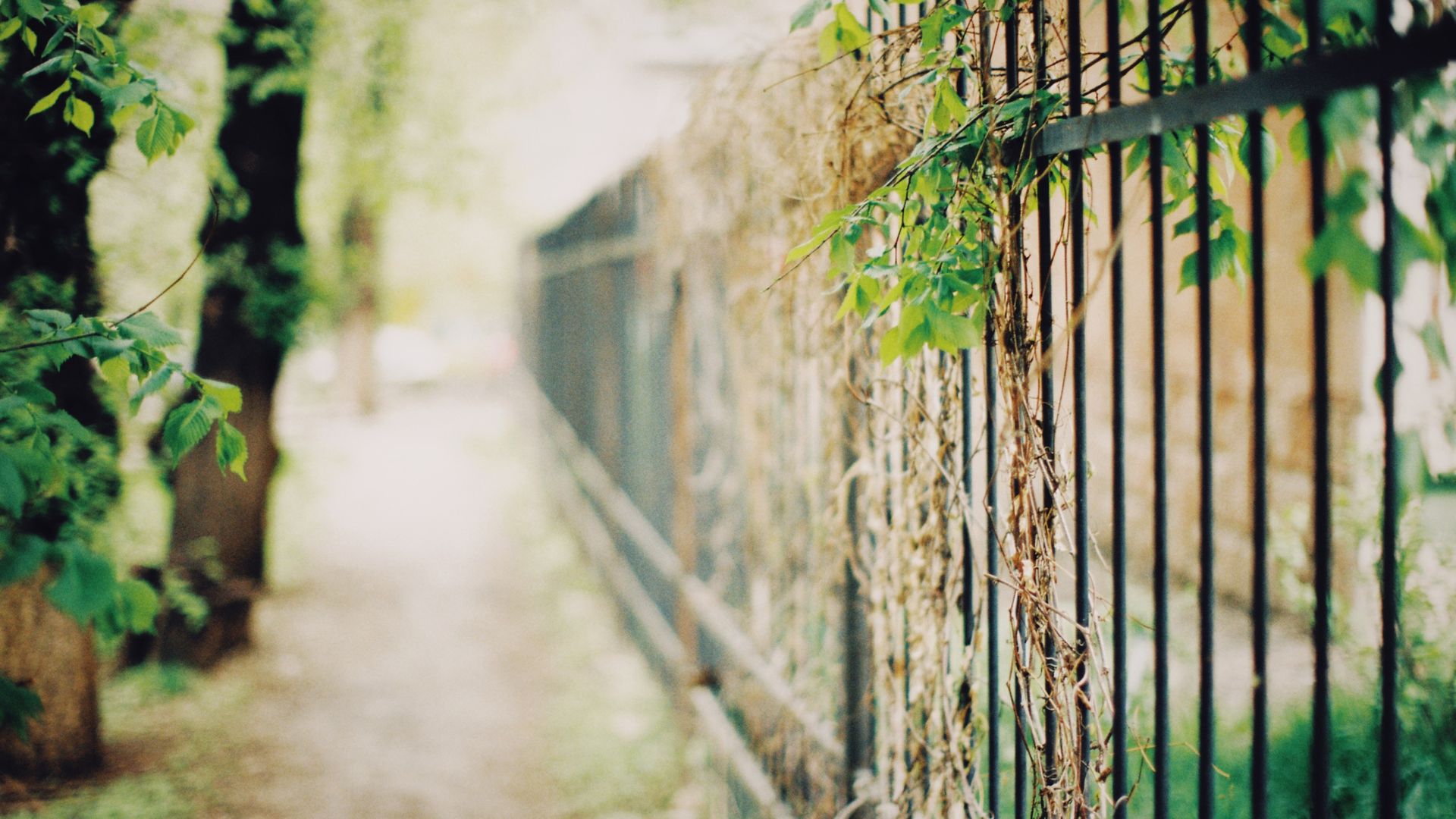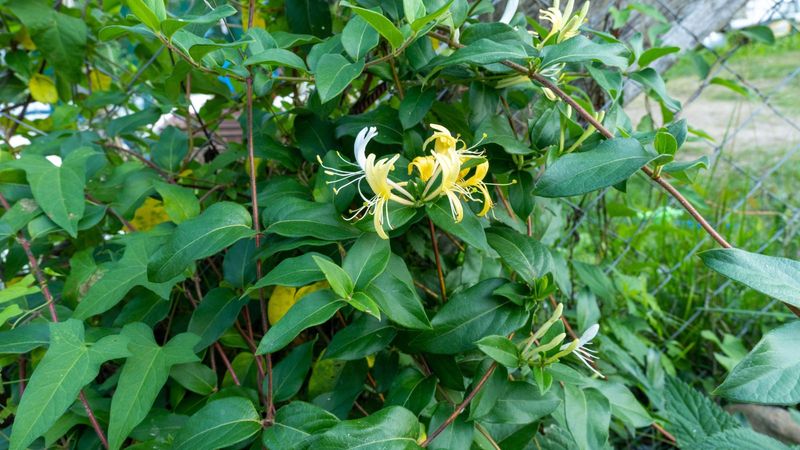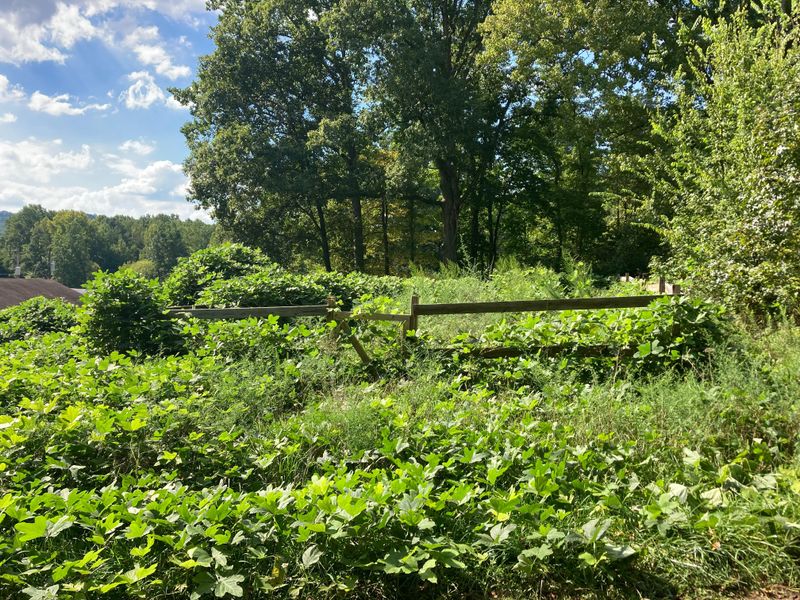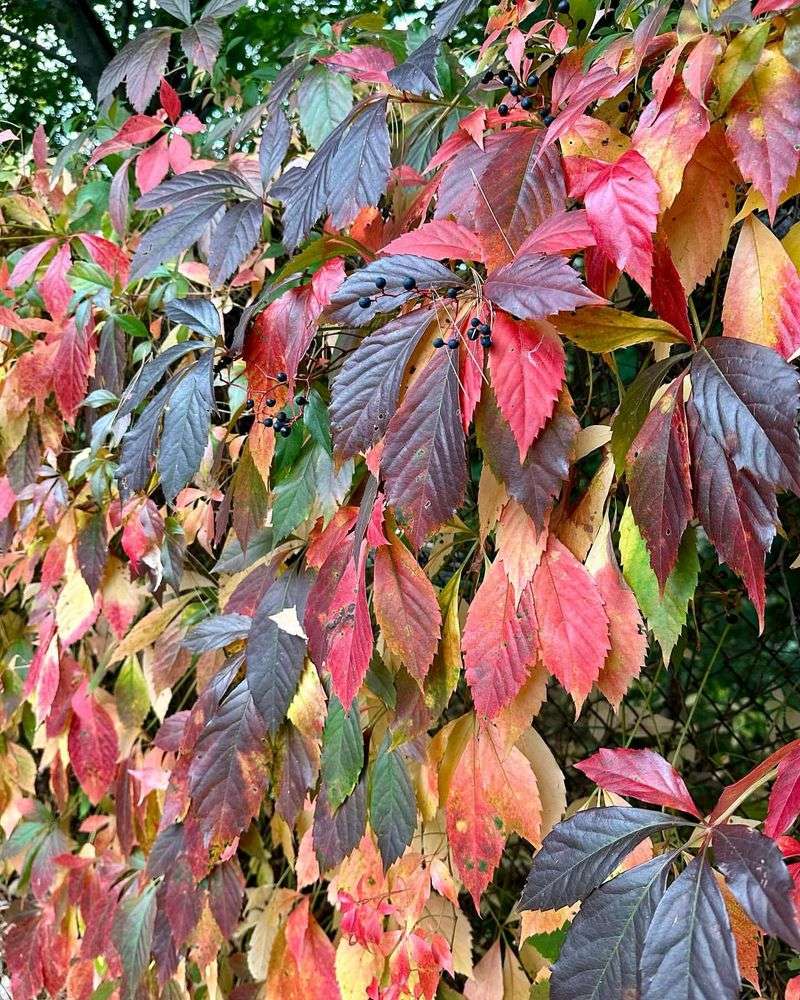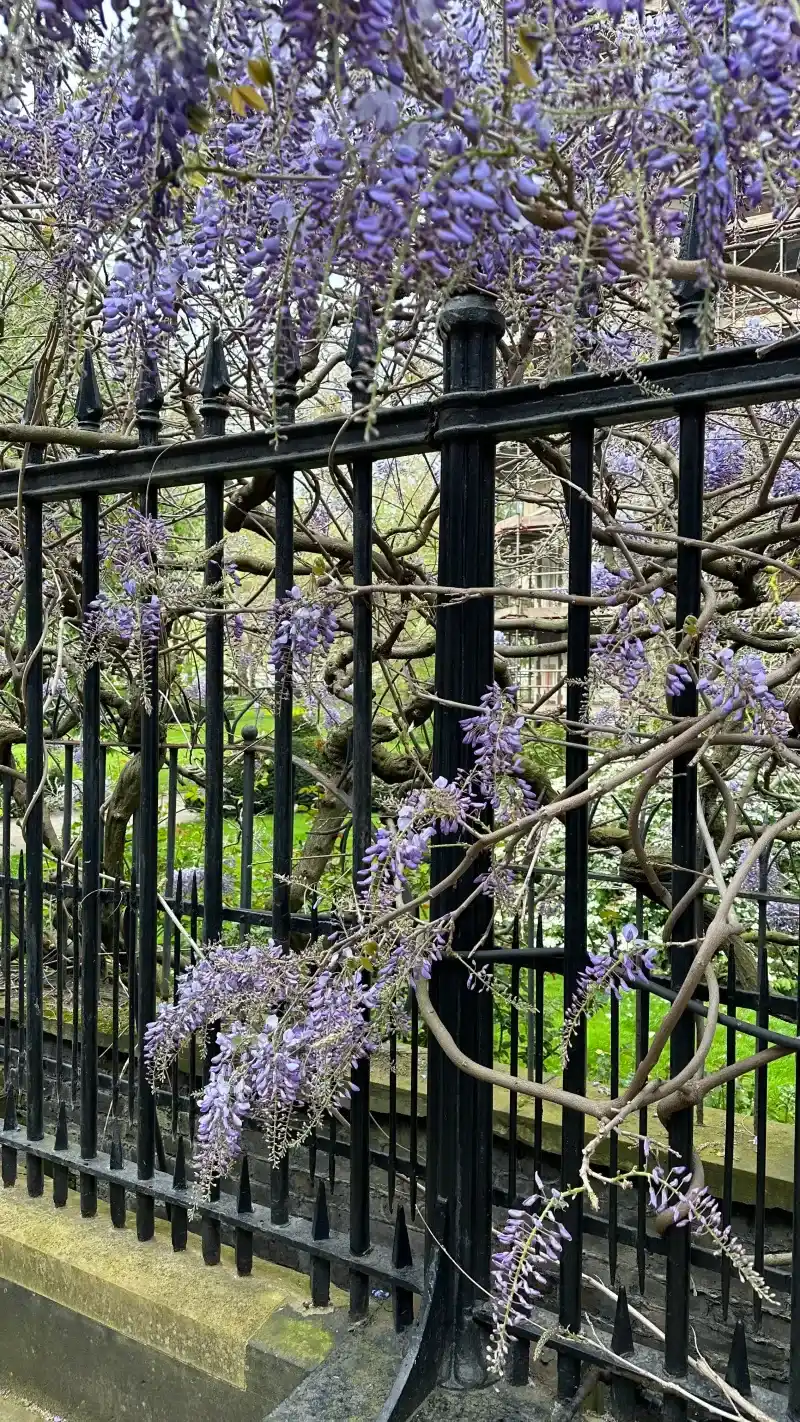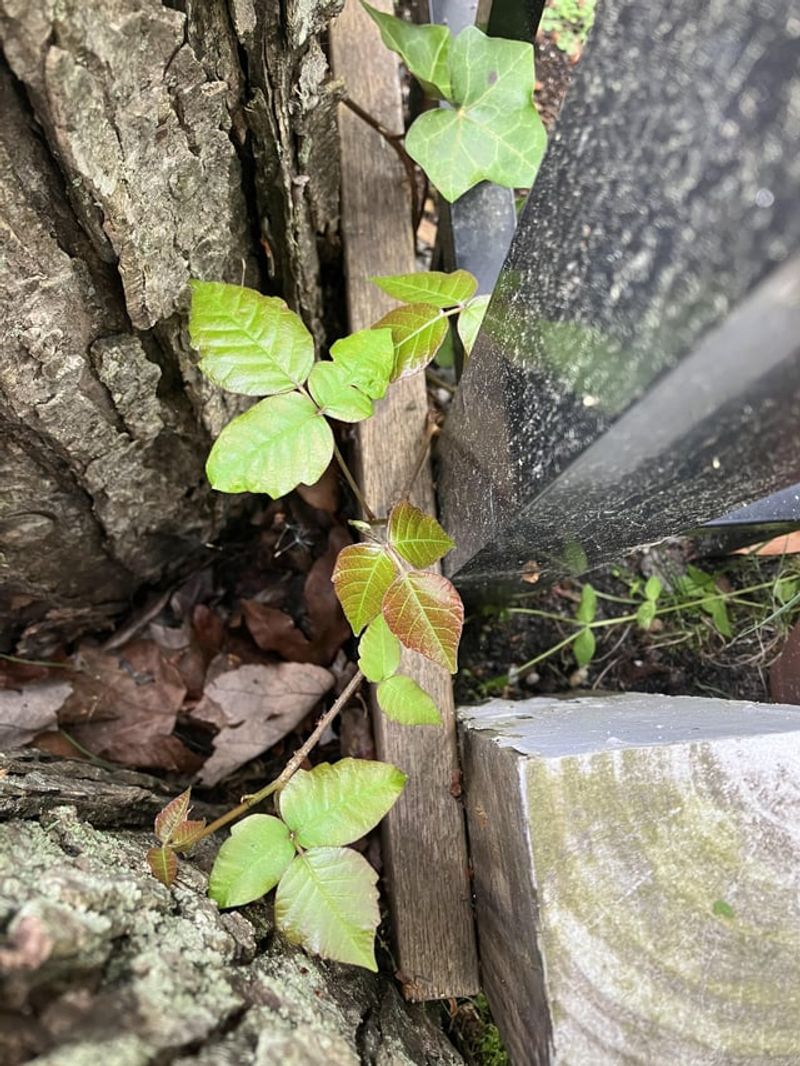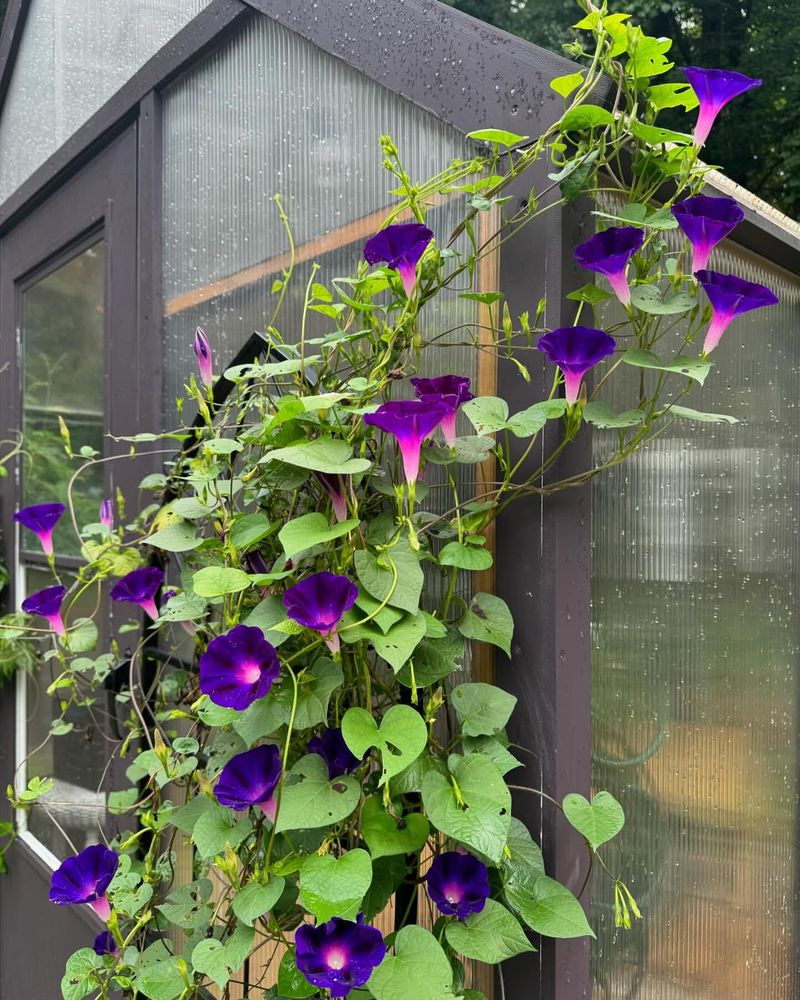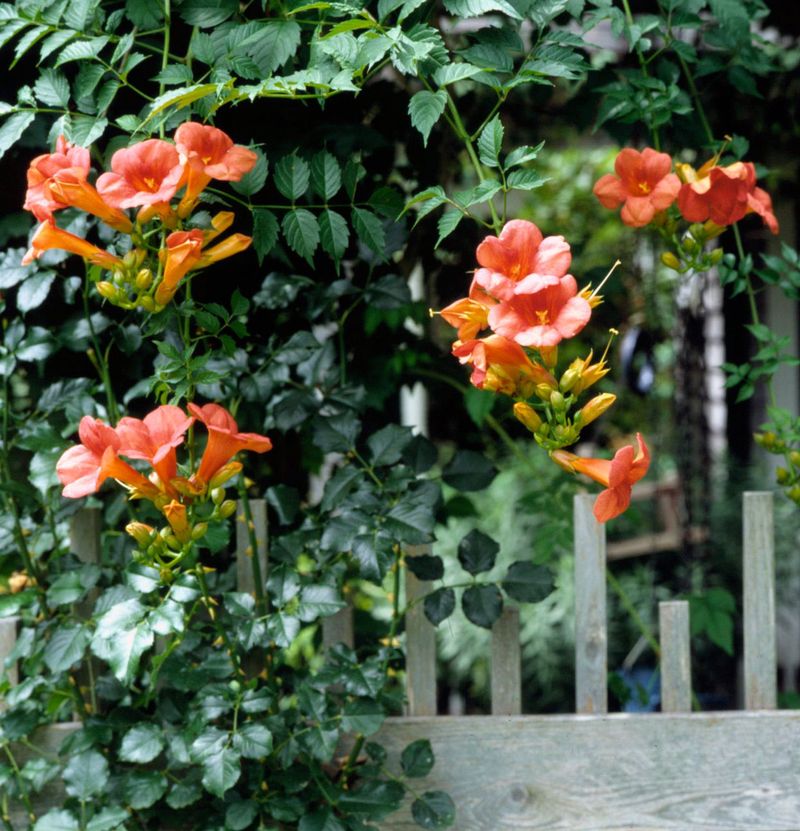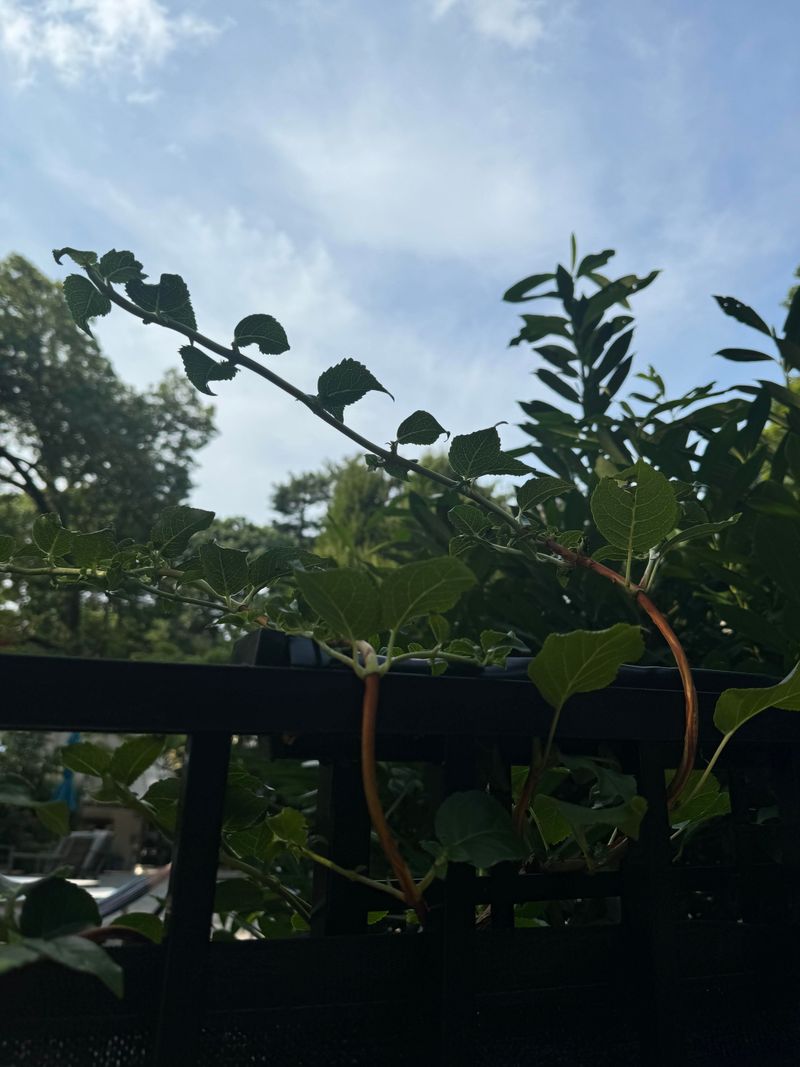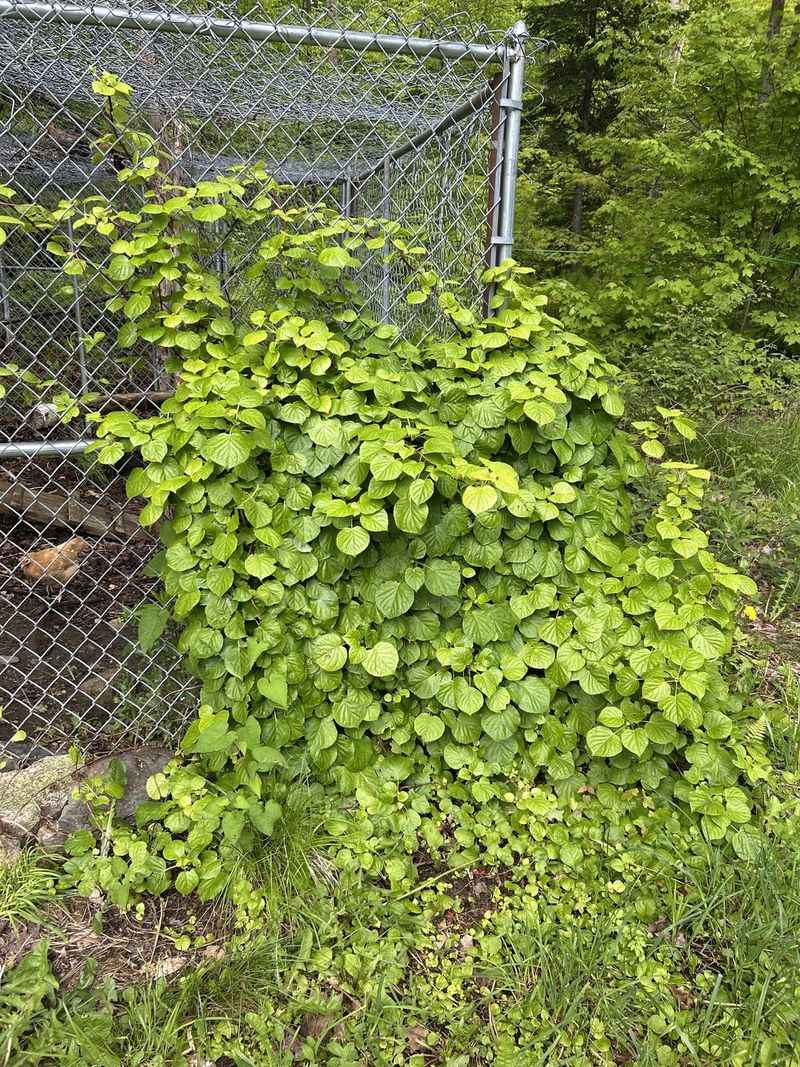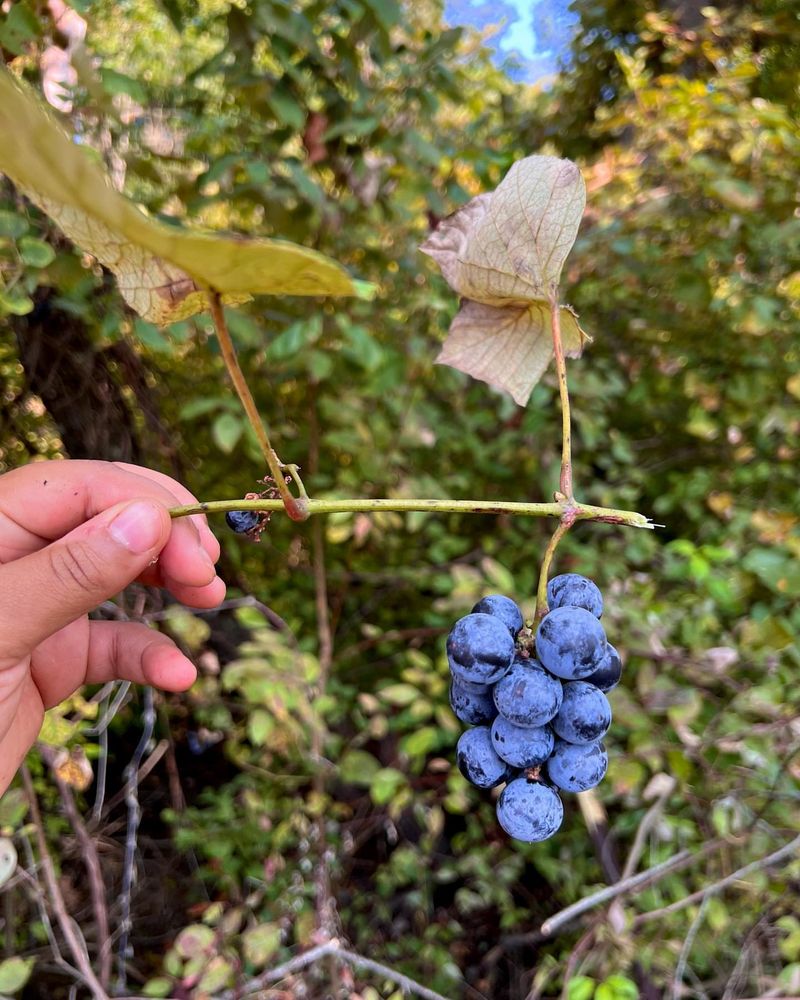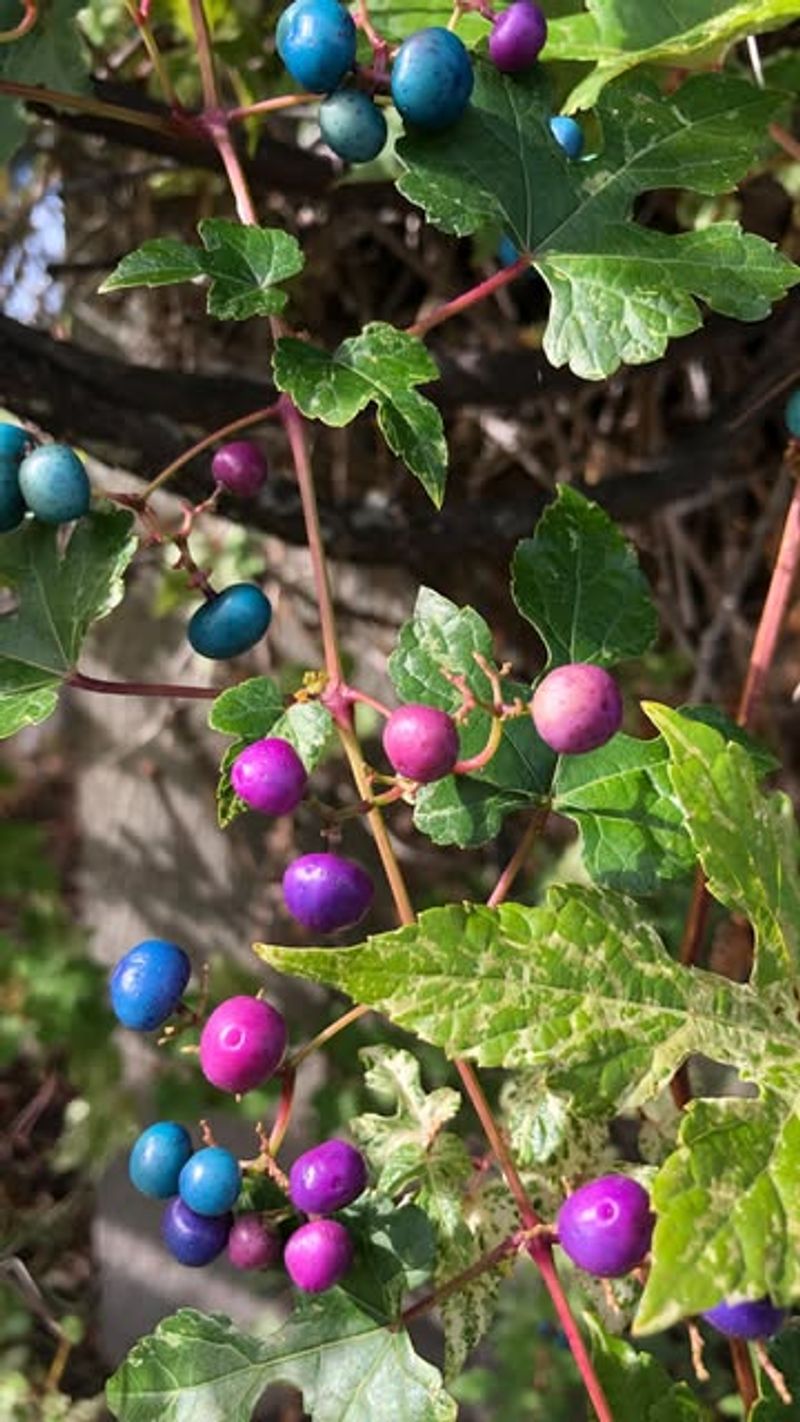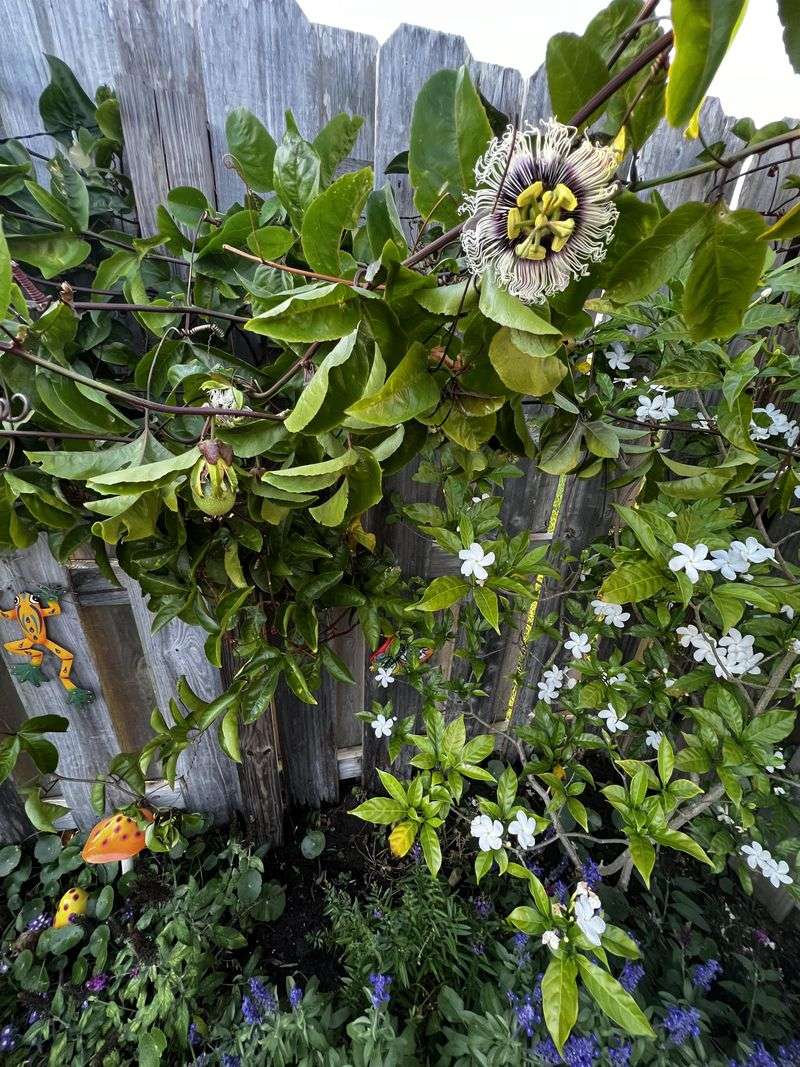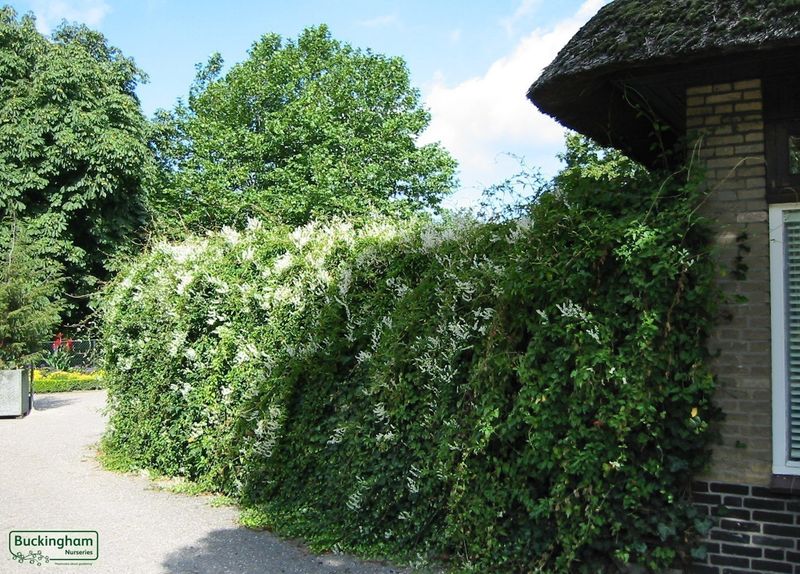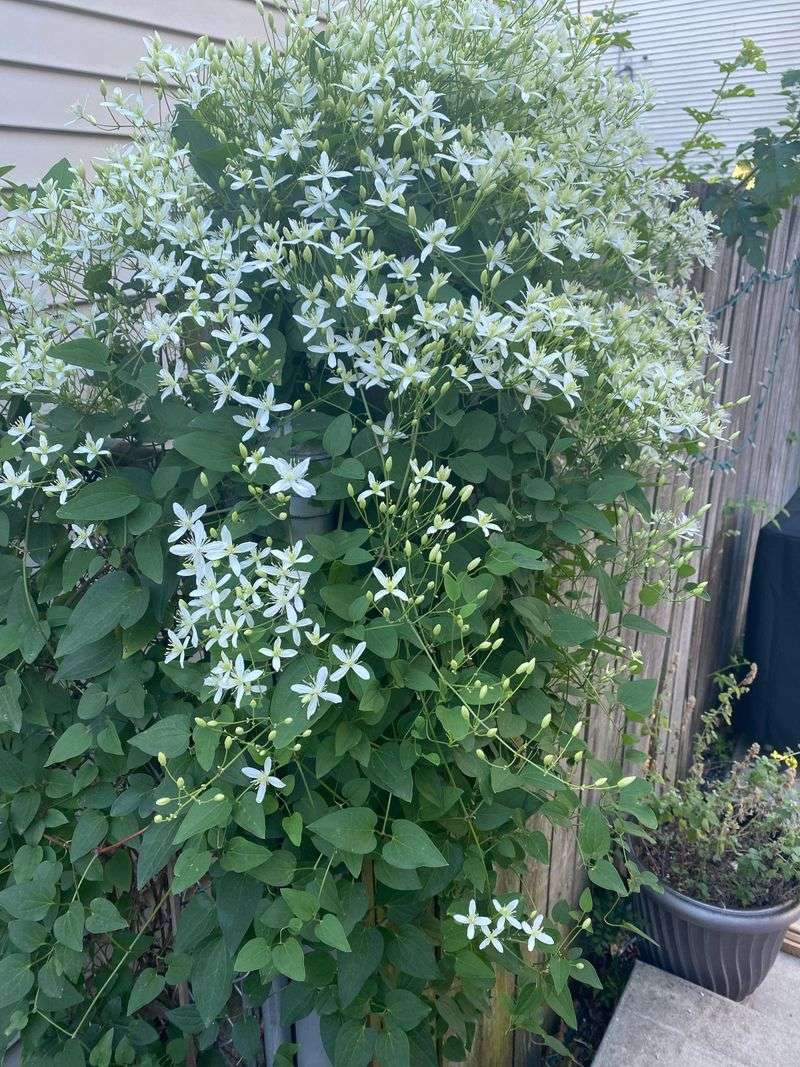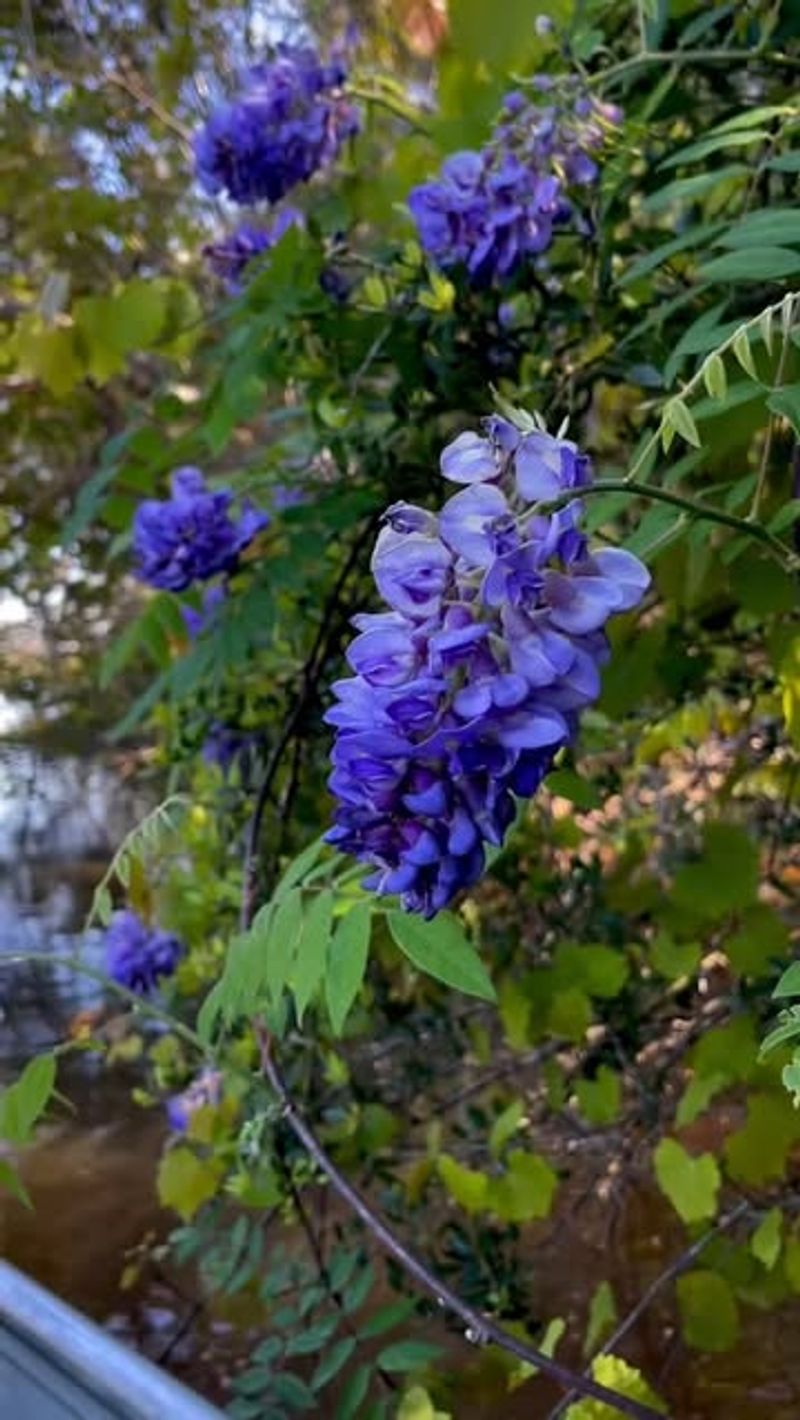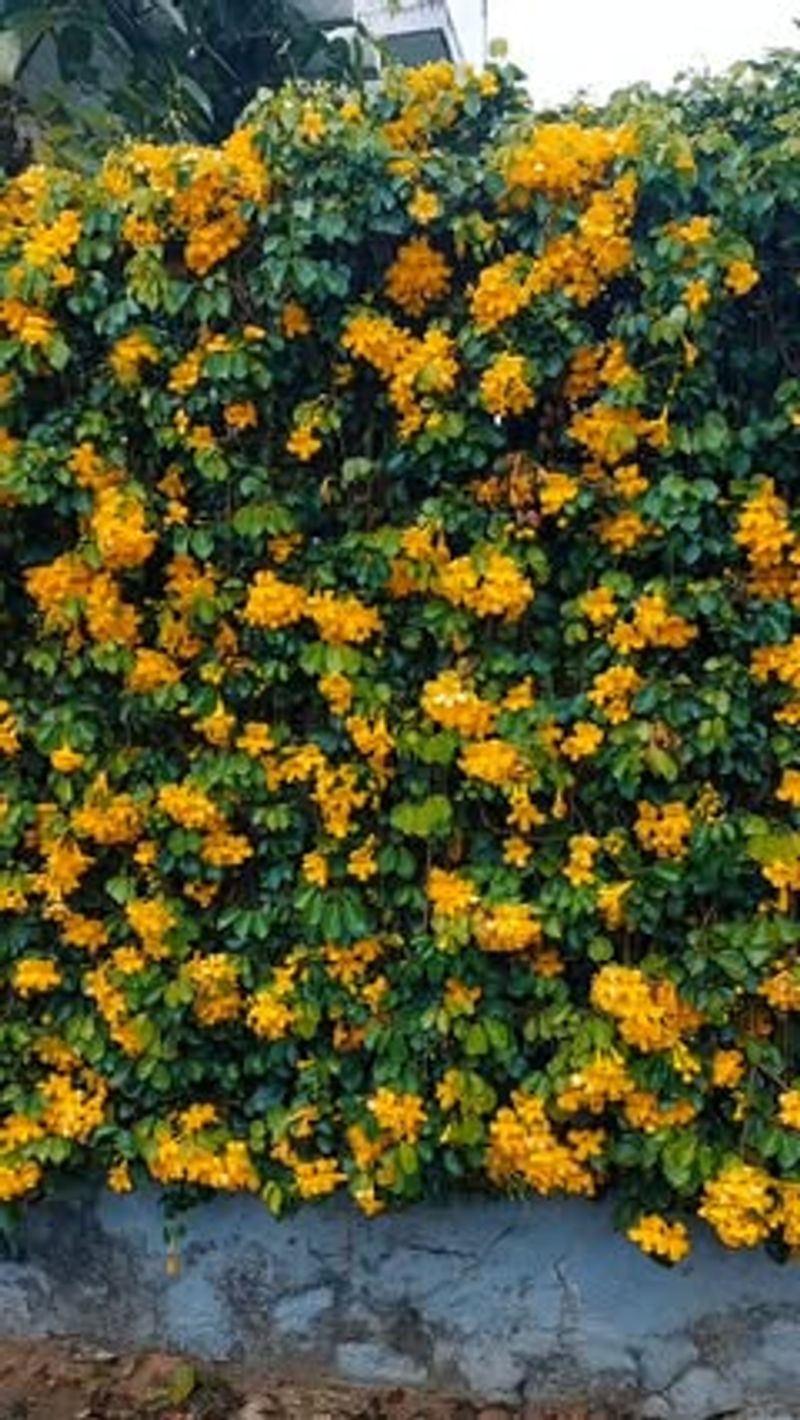Garden fences offer privacy and charm—but they’re also ladders for aggressive vines. These fast growers may seem harmless in spring, but by summer they can warp wood, crack concrete, and rip panels apart. One even snapped a slat off my backyard fence last year.
Late summer sends vines into overdrive, with tendrils growing inches overnight. Add rain, and the weight alone can overwhelm fence posts not built for such strain.
Catching these climbers early can save major repair costs. Most damage goes unnoticed until supports lean or décor cracks—just when the vines have already crept deep into every crevice.
1. English Ivy
Notorious for its aggressive aerial roots that dig into mortar, wood, and even vinyl. These roots secrete a cement-like substance that can actually pull apart fence materials as the vine grows heavier.
Regular trimming keeps it manageable, but never let it reach the top of your fence. Cut it back at least 3 feet from the fence base each spring. My neighbor ignored hers for just one season and now faces replacing an entire fence panel where the wood rotted under the dense growth.
2. Japanese Honeysuckle
Deceptively sweet-smelling but incredibly vigorous, this vine twists tightly around fence posts and rails, eventually girdling and weakening them. The weight can cause fence sections to sag dramatically within a single growing season.
Cut vines at the base and carefully unwind them rather than pulling, which can damage the fence further. Last year, I discovered a section completely hidden under honeysuckle foliage had rotted away because no air could circulate around the wood.
3. Kudzu
Often called “the vine that ate the South,” kudzu can grow up to a foot per day during summer months. This monster doesn’t just climb your fence—it completely engulfs it under layers of large leaves.
The sheer weight of mature kudzu can collapse fence sections overnight after heavy rain. Immediate removal is necessary upon spotting the first leaves. Cutting isn’t enough; you’ll need to dig out the crown and roots or use targeted herbicides to prevent regrowth.
4. Virginia Creeper
The adhesive pads on Virginia creeper’s tendrils attach firmly to surfaces, leaving behind a sticky residue that damages paint and finishes when removed. Its five-leaflet pattern often gets it confused with poison ivy.
Virginia creeper becomes extremely heavy in autumn when laden with berries. Remove it by cutting at the base and letting the vine dry out before carefully peeling away. I’ve seen this vine pull down gutters with its weight, so your fence stands little chance against mature growth.
5. Wisteria
Beautiful but brutally strong, wisteria’s woody stems can actually crush fence panels as they twist and thicken over time. The main stems become as thick as small trees within a few years.
Many gardeners underestimate how powerful mature wisteria becomes. Cut it back severely every autumn, and never let it wind around fence posts. My friend’s decorative arbor was completely dismantled by a ten-year-old wisteria that pulled the supporting posts right out of concrete footings.
6. Poison Ivy
Beyond its infamous skin irritation, poison ivy’s hairy aerial roots dig into wood, accelerating rot and decay. The oils that cause rashes also damage painted or treated surfaces over time.
Never pull poison ivy without full protection—long sleeves, pants, and gloves are essential. Cut the vine at the base and apply herbicide directly to the cut stem. Remember that even dead vines contain the irritating urushiol oil for up to five years.
7. Morning Glory
Don’t let those pretty flowers fool you. Morning glory vines twist so tightly around fence rails that they can warp and bend them over time. Their rapid growth means they can cover a fence in weeks.
These annual vines produce thousands of seeds that remain viable for decades in soil. Pull seedlings immediately when spotted near fences. I once thought these flowers would be a nice fence decoration until I noticed my gate wouldn’t close properly because the wood had twisted.
8. Trumpet Vine
Hummingbirds love it, but your fence doesn’t. Trumpet vine’s aggressive root system can actually push up under fence footings, causing posts to shift and lean. The orange-flowered menace spreads through underground runners.
Any piece of root left in the ground will regenerate, making control difficult. Install a root barrier at least 30 inches deep around valued structures. My trumpet vine managed to send runners 15 feet from the main plant, emerging right through my neighbor’s fence line.
9. Boston Ivy
Often planted intentionally, Boston ivy’s adhesive discs attach so firmly they can pull off chunks of wood when removed. The dense foliage traps moisture against fence surfaces, promoting rot and fungal growth.
Fall is the best time to remove it, when adhesion is weakest. Spray the vine with water before removal to minimize damage to the fence. Despite its problems, I still grow Boston ivy on a stone wall where its autumn color is stunning—just never on wooden structures.
10. Bittersweet
Oriental bittersweet’s thick, woody stems grow in cork-screw patterns that literally strangle anything they climb. The bright orange berries might look festive in fall, but they hide a fence-crushing monster.
This vine grows so vigorously it can pull down sections of chain-link fencing. Cut vines at ground level and again at shoulder height, then remove the middle section first. The remaining pieces can be unwound more easily without the weight pulling everything down.
11. Climbing Hydrangea
Slow to establish but eventually becomes extremely heavy. Climbing hydrangea’s aerial roots penetrate tiny cracks in fence materials, expanding them over time and allowing water to enter and cause further damage.
The mature weight of this vine can exceed 200 pounds, far more than most fence sections can support. I admired one on a stone wall for years before realizing it had worked its way between stones, pushing them apart with surprising force.
12. Wild Grape
Among the heaviest of all vines, wild grape develops trunk-like stems that can pull down entire fence sections. Its rapid growth can completely engulf a fence in a single season if left unchecked.
The expanding stems will actually lift fence posts out of the ground over time. Cut them at the base and apply vinegar directly to the cut stem to prevent regrowth. Last summer, I watched a neglected wild grape vine pull a neighbor’s chain-link fence completely sideways.
13. Porcelain Berry
Often mistaken for wild grape, porcelain berry produces distinctive multi-colored berries that birds spread everywhere. The vine quickly forms a thick mat that can completely cover a fence, blocking airflow and trapping moisture.
The weight of mature growth can exceed 100 pounds per fence section. Regular monitoring for seedlings is essential, as birds can drop seeds anywhere. I’ve pulled dozens of seedlings from my garden beds after birds feasted on my neighbor’s mature vine.
14. Passion Flower
While its exotic flowers are prized, passion flower’s tendrils wrap tightly around fence components, eventually girdling them. In warm climates, it grows year-round with little dormancy.
The constant pressure from wrapping tendrils can warp fence materials over time. Train it onto proper trellises instead, keeping it away from fences. My gardening friend learned this lesson after her vinyl fence developed permanent spiral indentations where the vine had tightly gripped it for years.
15. Mile-A-Minute Vine
Appropriately named, this annual vine can grow 6 inches daily. Its barbed stems catch on anything, allowing it to climb rapidly and form a blanket-like cover over fences and other plants.
The thorny stems make removal painful and difficult once established. Pull young plants immediately while wearing thick gloves. This aggressive invader appeared in my community recently, and within weeks had covered 30 feet of roadside fence before anyone noticed.
16. Clematis
Not all clematis varieties are problematic, but vigorous types like Sweet Autumn can produce such dense growth that fence sections sag under the weight. Their twining leaf stems wrap tightly around narrow fence components.
Prune after flowering to control size and weight. Some varieties need cutting back to 12 inches annually. I’ve grown clematis successfully by providing a separate trellis 8 inches away from my fence, allowing airflow and preventing direct contact with fence materials.
17. Chinese Wisteria
Even more aggressive than its Japanese cousin, Chinese wisteria’s stems can reach 10 inches in diameter. These woody trunks exert enormous pressure on fence posts and rails as they grow and twist.
The incredible strength of mature stems can bend metal and snap wood components. Never plant this species near any structure you value. My garden center now refuses to sell this variety after too many customer complaints about structural damage to fences, decks, and even house siding.
18. Cat’s Claw Vine
Named for its sharp, claw-like tendrils that grip surfaces with incredible strength. These specialized hooks dig into wood, creating entry points for moisture and insects that accelerate fence deterioration.
The adhesive pads on tendrils remain attached even when the vine is cut. Remove them carefully with a plastic scraper to avoid further damage. A gardening friend spent three weekends removing a mature cat’s claw vine, only to find the fence needed replacement due to extensive damage.

